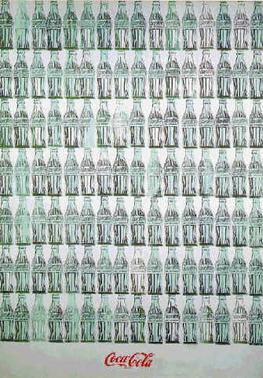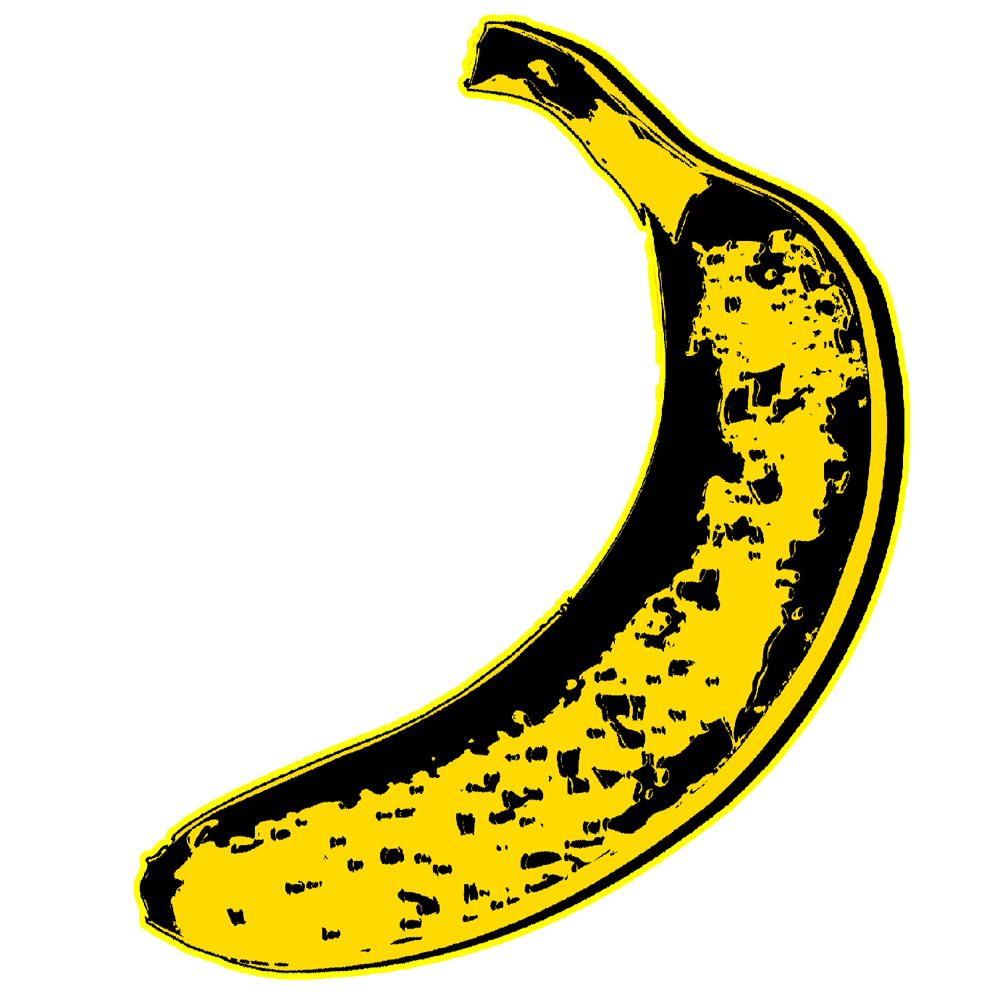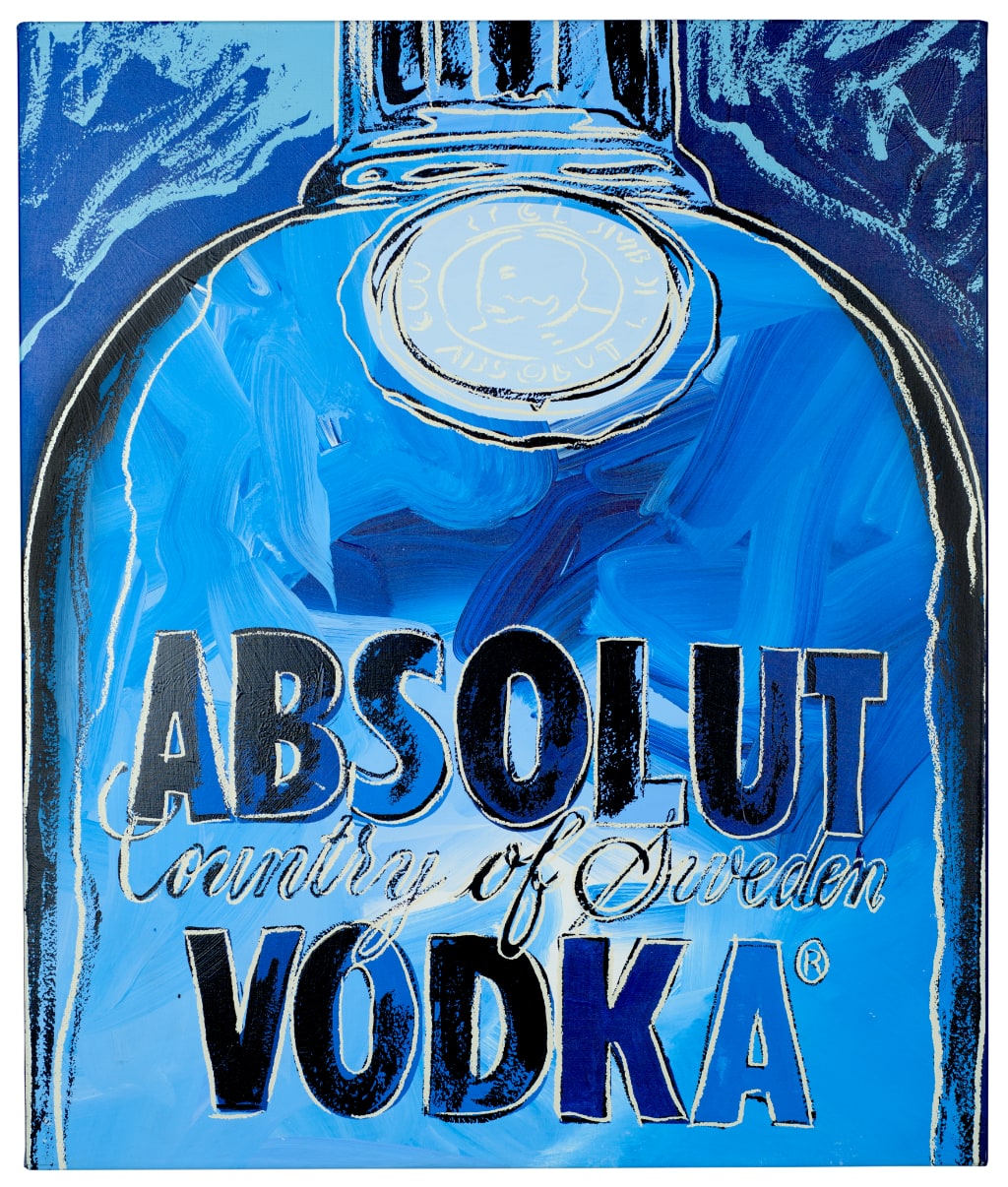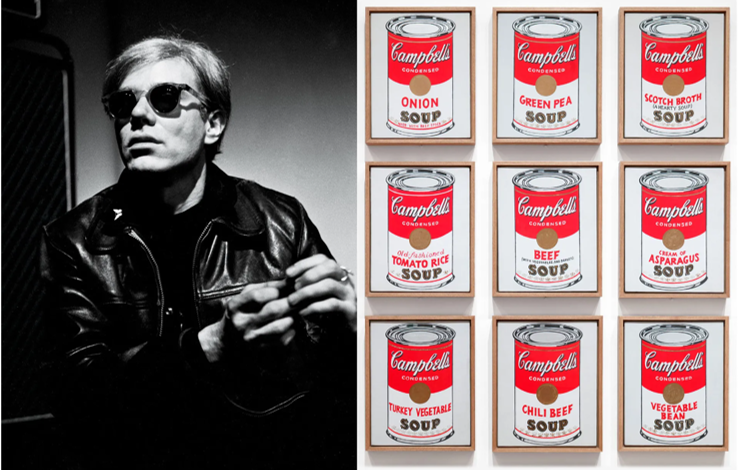Before entering the world of advertising, Warhol spent crucial years as an advertising illustrator for companies such as Tiffany & Co. and Harper’s Bazaar. In a way, this professional experience connected his art to commerce and allowed him to understand the relationship between society and consumerism in the post-war period.
Warhol’s fascination with advertising stemmed from his belief that consumer culture was a defining feature of American society. He saw advertising as a reflection of contemporary human desires, aspirations and values. By elevating advertising to the status of art, he challenged traditional notions of beauty, originality, and artistic value.
Artist and businessman
In addition to being responsible for the flowering of Pop Art, Warhol was also a productive artist and is known to have been able to make and invest money effectively. “I started as a commercial artist, and I want to finish as a business artist. Being good in business is the most fascinating kind of art,” Andy Warhol said.
In 1985, he created “Ads” for Feldman Fine Arts. This portfolio consisted of ten original ads. Warhol had a close relation to this portfolio as he drew heavily from his past and his former commercial illustrations. The Ads portfolio consisted of ads for Apple, Paramount, Blackglama (Judy Garland), Rebel without a Cause (James Dean), Chanel, The New Spirit (Donald Duck), Life Savers, Van Heusen (Ronald Reagan), Mobil and Volkswagen. Images were selected from fashion, film, industry, and technology.
In the Ads, Warhol used his signature screen-printing technique. This method allowed him to emulate the sleek and polished aesthetic of commercial advertising while enriching it with his own artistic flair.
Campbell’s soup day by day
Warhol began painting famous American products such as Campbell’s Soup and Coca-Cola in the 1960s. Campbell’s Soup is one of his most famous works. Why Campbell’s soup? Warhol answered this question by saying that he had had it for lunch every day of his life, so it was ingrained in his memory, and he wanted to immortalise it.
Video: Andy Warhol – Campbell’s Soup
Green Coca-Cola
Andy Warhol’s advertising wasn’t necessarily pandering. His “Green Coca-Cola Bottles” are a beautiful proof. Here, the image of a single bottle is repeated in regular rows, seven high by sixteen across, above the company’s logo. Each of the bottles differs in both the evenness of the green underpainting and in the clarity of its stamped profile. The bottles are also often slightly askew, disturbing the overall regularity of the grid and making them appear simultaneously handmade and individualised, streamlined and mass-produced.
 Source: Wikimedia Commons based on fair use under United States copyright law
Source: Wikimedia Commons based on fair use under United States copyright lawWith this “deadpan” and slightly ironic rendering, Warhol at once criticised and glorified the consumerist idols and surface values of America’s media-saturated postwar culture.
What is certainly worth mentioning is the Japanese television commercial for Diet Coke. It aired in 1985 and perfectly encapsulates Warhol’s words from his book The Philosophy of Andy Warhol, where he says: “What’s great about this country is that America started the tradition where the richest consumers buy essentially the same things as the poorest. You can be watching TV and see Coca Cola, and you know that the President drinks Coca Cola, Liz Taylor drinks Coca Cola, and just think, you can drink Coca Cola, too. A coke is a coke and no amount of money can get you a better coke than the one the bum on the corner is drinking. All the cokes are the same and all the cokes are good.”
Video: Coca-Cola (1985)
Not all bananas are alike
Who knows what Warhol was thinking when he created his famous banana. Perhaps his approach was the same as to Campbell’s soup. Or maybe he simply liked the banana’s mundanity and essentially boring nature, which he decided to do away with. In any case, his banana was intriguing. In 1967, it appeared on the cover of the Velvet Underground & Nico album. On the first few records, there was a sticker, instructing you to “peel slowly and see”. A pink, peeled banana appeared underneath. Original editions of the album with the peel-off sticker are now rare collectors’ items.
 Telrúnya, CC BY-SA 3.0, via Wikimedia Commons
Telrúnya, CC BY-SA 3.0, via Wikimedia CommonsYummy ice cream on TV
The number of Andy Warhol’s advertising achievements is truly overwhelming. For example, a 1968 advertisement for the Manhattan restaurant chain Schrafft’s has an interesting history. A one-minute commercial for Underground Sundae ice cream, which Warhol created, was described by Schrafft’s as: “Yummy Schrafft’s vanilla ice cream in two groovy heaps, with three ounces of mind-blowing chocolate sauce undulating within a mountain of pure whipped cream topped with a pulsating maraschino cherry served in a bowl as big as a boat.”
Time, however, saw it a little differently: “Onto the screen flashes a shiny red dot, which turns out to be a maraschino cherry, which turns out to sit atop a chocolate sundae, which turns out to be the focal point for a swirling phantasmagoria of color. All of which, it also turns out, is a 60-second videotape commercial for a venerable Manhattan-based restaurant chain.” Playboy pointed out “all the mistakes TV can make left in”.
In any case, Schrafft’s was pleased with the ad, claiming that they hadn’t got just a commercial, but acquired a work of art. Initially, it looked like the original ad was not preserved, so in 2014 Katrina Dixon and Brian L. Frye recreated it. However, it was rediscovered later and is owned by the Kramlich Collection. Let’s take a look at its remake:
Video: Andy Warhol for Schrafft’s [remake]
Andy Warhol and Burger King
That not only Warhol’s art but also his controversial persona was attractive is evidenced by a TV ad that aired during the 2019 Super Bowl. It was as bizarre as Warhol himself. David Miami’s Big Game ad is neither flashy, nor funny, nor even expected. It is simply a 4.5-minute footage of Warhol stoically consuming a Whopper from Burger King. He quietly takes it out of the bag, unwraps it, then slathers it with ketchup and takes a bite. The words “#EatLikeAndy” and the old-school Burger King logo appear on the screen. That’s it.
“The whole campaign was designed to generate discussion,” commented Fernando Machado, Burger King’s global CMO, adding that while initial reactions to the ad were universally negative, the #EatLikeAndy campaign was aimed at improving brand perception in the long term. “In the last five years that I’ve been here, we haven’t seen anything even close to that in terms of changing brand perception,” he noted. Apparently, that hackneyed “bad advertising is still advertising” applies:
Video: Burger King - Andy Warhol
In addition to burgers, Warhol personally promoted TDK videotapes, for example.
Warhol and Absolut vodka
In 1985, Andy Warhol created an advertising artwork based on the silhouette of an Absolut bottle. Warhol already had a positive attitude to iconic packaging and consumer product designs, which is reflected in this campaign. The original “Absolut Warhol” captures the simple yet elegant silhouette of an Absolut Vodka bottle against a black background and is now considered a truly iconic piece of artwork. The ad features Warhol’s signature, making it not only an advertisement but also a work of art.
For decades, there were rumours of the existence of a second Absolut Warhol painting, but these gossips remained unconfirmed until the Absolut “blue” painting was rediscovered at auction in 2020. While researching its provenance, the original contract was discovered, confirming that two paintings had indeed been commissioned. The painting that is now part of the Absolut Art Collection will be unveiled on 17 October 2024 at Stockholm’s Spritmuseum as the centrepiece of a new exhibition, “Andy Warhol, Money On The Wall”, curated by renowned art historian and Warhol biographer Dr Blake Gopnik. Fans of Warhol’s work will soon be able to see one of his newly discovered masterpieces for themselves.
 Source: https://theabsolutgroup.com/wp-content/uploads/2024/06/blue_warhol_pr-hero.jpg
Source: https://theabsolutgroup.com/wp-content/uploads/2024/06/blue_warhol_pr-hero.jpgThe genius who redefined the world of advertising
Andy Warhol burst into the world of advertising like a comet and turned what was considered simple marketing into an exalted artistic expression with his countless works. His work created a bridge between commercial products and high art and redefined the aesthetic of advertising from the ground up. His novel approach to repetition and the ubiquity of brands has shown how powerful branding can be. With his work, the advertising industry began to look at campaigns differently. Warhol’s creativity and unconventional approaches inspired new generations of advertising creatives to seek artistic expression in their work. And this inspiration continues to this day.

